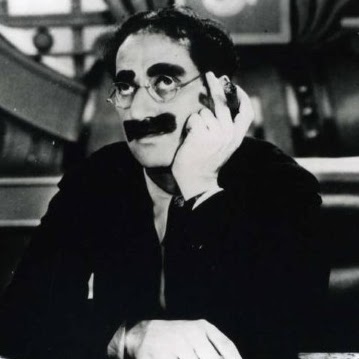Charles H Phipps
age ~98
from Dallas, TX
- Also known as:
-
- Charles Howard Phipps
- Charles Jeffrey Phipps
- Charles J Phipps
- Chas H Phipps
- Mary Claire Phipps
- Christopher Phipps
- Christopher S
- Phipps Chas
- Phone and address:
-
29 Robledo Dr, Dallas, TX 75230
(214)6913120
Charles Phipps Phones & Addresses
- 29 Robledo Dr, Dallas, TX 75230 • (214)6913120
- Paris, KY
- Santa Fe, NM
- Cookeville, TN
Lawyers & Attorneys

Charles Alan Phipps - Lawyer
view sourceLicenses:
Virginia - Authorized to practice law 1992

Charles Edward Phipps, Dallas TX - Lawyer
view sourceAddress:
2200 Ross Avenue Ste 2200, Dallas, TX 75201
Licenses:
New York - Currently registered 1998
Texas - Eligible To Practice In Texas 1995
Texas - Eligible To Practice In Texas 1995
Education:
University of Texas
Specialties:
Intellectual Property - 100%

Charles Phipps - Lawyer
view sourceOffice:
Locke Lord LLP
Specialties:
Intellectual Property
Litigation
Litigation
ISLN:
909888396
Admitted:
1995
University:
Texas A & M University, B.S., 1992; Texas A & M University, B.S., 1992
Law School:
The University of Texas School of Law, J.D., 1995

Charles Phipps - Lawyer
view sourceOffice:
Charles A. Phipps, LLC
Specialties:
Appeals
Marriage / Prenuptials
Marriage / Prenuptials
Immigration Law
Marriage / Prenuptials
Marriage / Prenuptials
Immigration Law
ISLN:
913652914
Admitted:
1992
University:
Abilene Christian University, B.A., 1987; Abilene Christian University, M.A., 1989
Law School:
George Washington University, J.D., 1992

Charles Phipps - Lawyer
view sourceISLN:
904437032
Admitted:
1942
University:
University of Oregon, B.S.
Law School:
University of Oregon, J.D.

Charles Edward Phipps - Lawyer
view sourceAddress:
2200 Ross Avenue
Phone:
(214)7408441 (Phone), (214)7408800 (Fax)
Work:
Locke Lord Bissell & Liddell LLP
Experience:
30 years
Specialties:
Intellectual Property
IP Litigation
IP Litigation
Jurisdiction:
New York (1998)
New York
New York 1998
Texas (1995)
Texas
Texas 1995
U.S. Patent and Trademark Office 1995
U.S. Court of Appeals for the Fifth Circuit
U.S. District Court for the Eastern District of New York
U.S. District Court for the Eastern District of Texas
U.S. District Court for the Northern District of Texas
U.S. District Court for the Southern District of New York
U.S. District Court for the Southern District of Texas
U.S. District Court for the Western District of Texas
U.S. Supreme Court
New York
New York 1998
Texas (1995)
Texas
Texas 1995
U.S. Patent and Trademark Office 1995
U.S. Court of Appeals for the Fifth Circuit
U.S. District Court for the Eastern District of New York
U.S. District Court for the Eastern District of Texas
U.S. District Court for the Northern District of Texas
U.S. District Court for the Southern District of New York
U.S. District Court for the Southern District of Texas
U.S. District Court for the Western District of Texas
U.S. Supreme Court
Law School:
The University of Texas School of Law
Education:
The University of Texas School of Law, JD
Texas A&M University, BS
Texas A&M University, BS
License Records
Charles R Phipps
License #:
RS024517A - Expired
Category:
Real Estate Commission
Type:
Real Estate Salesperson-Standard
Name / Title
Company / Classification
Phones & Addresses
President
Central Heating & Air, Inc.
Heating & Air Conditioning
Heating & Air Conditioning
902 Townsend Valley Rd, Paris, KY 40361
(859)9874503, (877)2038505
(859)9874503, (877)2038505
President
Central Heating and Air Inc
Plumbing/Heating/Air Cond Contractor
Plumbing/Heating/Air Cond Contractor
902 Townsend Vly Rd, Paris, KY 40361
(859)9874503
(859)9874503
President
Central Heating & Air, Inc
Air Duct Cleaning · Heating & Air Conditioning/hvac · Wells
Air Duct Cleaning · Heating & Air Conditioning/hvac · Wells
902 Townsend Vly Rd, Paris, KY 40361
Lexington, KY 40361
(859)9874503, (877)2038505, (859)2935551
Lexington, KY 40361
(859)9874503, (877)2038505, (859)2935551
Director, Director , Vice President
SEVIN ROSEN VIII MANAGEMENT COMPANY
13355 Noel Rd STE 1350, Dallas, TX 75240
13455 Noel Rd, Dallas, TX 75240
29 Robledo Dr, Dallas, TX 75230
13455 Noel Rd, Dallas, TX 75240
29 Robledo Dr, Dallas, TX 75230
Director
PHIPPS LABORATORIES, INC
Business Services at Non-Commercial Site · Nonclassifiable Establishments
Business Services at Non-Commercial Site · Nonclassifiable Establishments
4049 Hanover St, Dallas, TX 75225
General Partner
LAS TRAMPAS FINANCIAL SERVICES, LTD
Business Services
Business Services
12001 N Central Expy STE 1130, Dallas, TX 75243
8401 N Central Expy, Dallas, TX 75225
8401 N Central Expy, Dallas, TX 75225
Vice Presi, Director , Vice President
SEVIN ROSEN IV MANAGEMENT COMPANY
13355 Noel Rd STE 1350, Dallas, TX 75240
13455 Noel Rd, Dallas, TX 75240
29 Robledo Dr, Dallas, TX 75230
13455 Noel Rd, Dallas, TX 75240
29 Robledo Dr, Dallas, TX 75230
Vice Presi, Director , Vice President
SEVIN ROSEN VII MANAGEMENT COMPANY
13355 Noel Rd STE 1350, Dallas, TX 75240
13455 Noel Rd, Dallas, TX 75240
29 Robledo Dr, Dallas, TX 75230
13455 Noel Rd, Dallas, TX 75240
29 Robledo Dr, Dallas, TX 75230
Us Patents
-
Protective Helmet
view source -
US Patent:20130061371, Mar 14, 2013
-
Filed:Sep 8, 2011
-
Appl. No.:13/227901
-
Inventors:Emerson Spalding Phipps - Dallas TX, US
Charles Edward Phipps - Dallas TX, US -
International Classification:A42B 3/04
A42B 3/20 -
US Classification:2411
-
Abstract:A protective helmet useful in sports (e.g., football) for protecting the head of a user includes an outer layer and an inner layer. The outer layer is connected to the inner layer by multiple connectors that are under tension along their longitudinal axis. The connectors absorb energy from the force of an impact by resisting further tension along their longitudinal axis and allow the outer layer and inner layer to move relative to each other. The helmet affords a reduction in the amount of force, including rotational force, from an impact that is transferred to the head of a user.
-
Protective Helmet
view source -
US Patent:20130185837, Jul 25, 2013
-
Filed:Mar 11, 2013
-
Appl. No.:13/792812
-
Inventors:Emerson Spalding Phipps - Dallas TX, US
Charles Edward Phipps - Dallas TX, US -
International Classification:A42B 3/12
B60N 2/42
A47C 31/00
B60R 19/26 -
US Classification:2 25, 2411, 2413, 293155, 2972161, 5658
-
Abstract:A protective member such as a helmet includes an outer layer and an inner layer interconnected by multiple connectors, such as extension springs, under tension along their longitudinal axis. The connectors absorb energy from an impact force by resisting further tension along their longitudinal axis and allow the outer layer and inner layer to move relative to each other. In the helmet application, the head of a user experiences less impact force, reduced change in momentum or position of the head and neck, reduced head and neck loads and reduced amounts of linear and rotational acceleration. The protective member can be used in numerous applications and environments, including for participants in sports, in applications including bumpers, passenger cabins, car seats and beds.
-
Protective Helmet
view source -
US Patent:20170050593, Feb 23, 2017
-
Filed:Nov 4, 2016
-
Appl. No.:15/343586
-
Inventors:Emerson Spalding Phipps - Dallas TX, US
Charles Edward Phipps - Dallas TX, US -
International Classification:B60R 19/18
A42B 3/08
A42B 3/20
A42B 3/04
B60R 19/48
A42B 3/12
A42B 3/28
A47C 23/05
B60N 2/427
B60N 2/54
A42B 3/06
A42B 3/30 -
Abstract:A protective member such as a helmet includes an outer layer and an inner layer interconnected by multiple connectors, such as extension springs, under tension along their longitudinal axis. The connectors absorb energy from an impact force by resisting further tension along their longitudinal axis and allow the outer layer and inner layer to move relative to each other. In the helmet application, the head of a user experiences less impact force, reduced change in momentum or position of the head and neck, reduced head and neck loads and reduced amounts of linear and rotational acceleration. The protective member can be used in numerous applications and environments, including for participants in sports, in applications including bumpers, passenger cabins, car seats and beds.
-
Protective Member
view source -
US Patent:20160369861, Dec 22, 2016
-
Filed:Jun 21, 2016
-
Appl. No.:15/188585
-
Inventors:Emerson Spalding Phipps - Dallas TX, US
Charles Edward Phipps - Dallas TX, US -
International Classification:F16F 3/087
A41D 13/05
A41D 13/08
A42B 3/12
F16F 3/04
A41D 19/015
A43B 13/18
B60R 19/18
B63B 59/02
A42B 3/06
A41D 13/015 -
Abstract:A protective member includes outer and inner layers interconnected by multiple connectors under tension along their longitudinal axis. The connectors absorb energy from an impact force by resisting further tension along their longitudinal axis, can elongate along their longitudinal axis and allow the layers to move relative to each other. The protective member can be used in numerous applications and environments, including for participants in sports, in applications including bumpers, passenger cabins, car seats, beds, torso protection, ships, gloves, footwear and items.
-
Protective Helmet
view source -
US Patent:20150250246, Sep 10, 2015
-
Filed:May 26, 2015
-
Appl. No.:14/721158
-
Inventors:Emerson Spalding Phipps - Dallas TX, US
Charles Edward Phipps - Dallas TX, US -
International Classification:A42B 3/00
A42B 3/08
B60R 19/28
A47C 23/00
B60N 2/42
A42B 3/04
A42B 3/30 -
Abstract:A protective member such as a helmet includes an outer layer and an inner layer interconnected by multiple connectors, such as extension springs, under tension along their longitudinal axis. The connectors absorb energy from an impact force by resisting further tension along their longitudinal axis and allow the outer layer and inner layer to move relative to each other. In the helmet application, the head of a user experiences less impact force, reduced change in momentum or position of the head and neck, reduced head and neck loads and reduced amounts of linear and rotational acceleration. The protective member can be used in numerous applications and environments, including for participants in sports, in applications including bumpers, passenger cabins, car seats and beds.
Medicine Doctors
Resumes

Partner Emeritus At Sevin Rosen Funds
view sourcePosition:
Partner emeritus at Sevin Rosen Funds
Location:
Dallas/Fort Worth Area
Industry:
Financial Services
Work:
Sevin Rosen Funds since 2008
Partner emeritus
Texas Instruments 1957 - 1986
VP, SC market Developoment
Partner emeritus
Texas Instruments 1957 - 1986
VP, SC market Developoment

Electrical Department Leadman At Alkar-Rapidpak-Mp
view sourcePosition:
Electrical Department Leadman at Alkar-RapidPak-MP
Location:
Lodi, Wisconsin
Industry:
Food Production
Work:
Alkar-RapidPak-MP - Lodi, Wisconsin Currently holds this position Lodi, Wisconsin
Electrical Department Leadman
Electrical Department Leadman

Charles Phipps
view sourceLocation:
Dallas/Fort Worth Area
Industry:
Information Technology and Services

Charles Phipps
view sourceLocation:
United States

Charles Phipps
view sourceLocation:
United States
Plaxo

Charles Phipps
view sourceCumming, GA

Charles Phipps
view sourceat t

Charles Phipps
view sourceRCI
Classmates

Charles Phipps
view sourceSchools:
Centreville High School Centreville MS 1953-1966
Community:
Alma Williams, Lisa Cooper, Linda Evans

Charles Phipps
view sourceSchools:
Jefferson Township High School Matthews IN 1938-1942
Community:
Betty Howard

Charles Phipps
view sourceSchools:
Centreville Academy Centreville MS 1978-1988
Community:
Carolyn Dixon, Scotty James

Charles Phipps
view sourceSchools:
Cherokee High School Rogersville TN 1996-2000

Charles Phipps
view sourceSchools:
Ridgemont High School Ridgeway OH 1985-1989
Community:
Sandra Koehler, Tom Newland, Darlene Swavel, Michael Kelly

Charles Phipps
view sourceSchools:
Larned Elementary School Detroit MI 1975-1981
Community:
Patrick Mccomb, John Werth, Mike Christian

Charles Phipps
view sourceSchools:
Nipmuc Regional High School Upton MA 1978-1979
Community:
Marie Dunlavey, Patty Lavergne, Sue Deuitch, Julie Dean, Cheryl Dowden, Cathleen Cahill, Brenda Boucher, Jeff Tardy, Christina Huff, Donna Hill

Charles Phipps
view sourceSchools:
St. Joseph's Parochial School Troy NY 1971-1975, Burnt Hills-Ballston Lake High School Burnt Hills NY 1972-1975
Community:
Pam Considine, Cindy Egan

Charles Jr Phipps
view source
Charles Phipps
view source
Charlie Phipps
view source
Charles Phipps
view source
Charles Toby Phipps
view source
Charles Duke Phipps
view source
Charles Phipps
view source
Charles Phipps
view sourceYoutube
Myspace
Flickr
Googleplus

Charles Phipps

Charles Phipps

Charles Phipps

Charles Phipps

Charles Phipps
Work:
NoWaitApp - Developer

Charles Phipps

Charles Phipps

Charles Phipps
Get Report for Charles H Phipps from Dallas, TX, age ~98
















